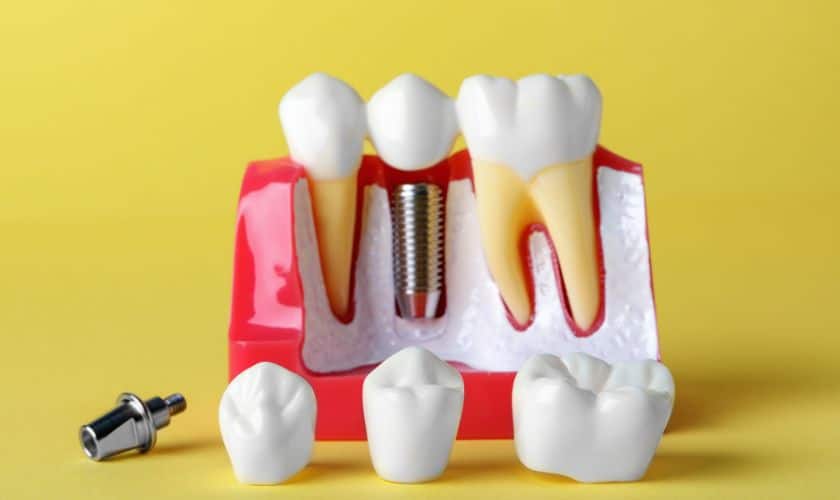Author: PV Smiles Reem Kidess | Posted on with comments
Scottsdale dental implants offer individuals the opportunity to restore their smiles in cases of tooth loss due to infection or physical damage. While not entirely natural, these implants possess features that enable seamless blending with natural tissue, making them safe and sometimes necessary for filling gaps between teeth.
To effectively replicate natural teeth, dental implants must adhere to standard specifications regarding raw materials and proper placement methods. Despite being artificial, when these implants meet these standards, they can function effectively within the oral cavity. Experts establish these standards for the construction and installation of dental implants.
Titanium root
Titanium is well-known in the medical field because of its ability to blend with natural bone tissue in a process called osseointegration. In this case, titanium is used as the root of the dental implant, for which sizes vary depending on the type of tooth missing and the size of the gap. Just recently, a new titanium alloy called Grade 5 titanium has been developed, adding traces of aluminum and vanadium. This makes it more durable without affecting the rate of osseointegration.
The grooves on the titanium root vary in design, but the function remains the same. The size of the titanium root also varies, ranging from small roots to accommodate spaces for the incisors to large ones for the molars. A Scottsdale dentist like Dr. Kidess often uses a variety of root sizes for specific kinds of missing teeth.
The Dental Implantation Process
- Consultation and Evaluation:
- The process typically begins with a consultation with a qualified dentist or oral surgeon specializing in dental implants.
- During this initial appointment, the dentist evaluates the patient’s oral health, including the condition of the jawbone and surrounding tissues, to determine if they are a suitable candidate for dental implants.
- X-rays or CT scans may be taken to assess bone density and identify potential challenges.
- Treatment Planning:
- Once the patient is deemed a suitable candidate for dental implants, a comprehensive treatment plan is developed.
- This plan outlines the number of implants needed, their precise placement locations, and any additional procedures required, such as bone grafting or sinus lifts.
- Implant Placement:
- The surgical phase begins with the placement of the dental implant fixture into the jawbone.
- This is typically done under local anesthesia to ensure the patient’s comfort.
- The dentist or oral surgeon makes an incision in the gum tissue to expose the underlying bone and then drills a small hole where the implant will be placed.
- The implant fixture, usually made of biocompatible titanium, is carefully inserted into the bone and secured in place.
- In some cases, a temporary restoration may be attached to the implant to maintain aesthetics and function during the healing process.
- Osseointegration:
- After implant placement, a process called osseointegration occurs, during which the bone fuses with the surface of the implant fixture.
- This integration provides a stable foundation for the eventual attachment of the artificial tooth or teeth.
- Healing and Recovery:
- Following implant placement, patients undergo a period of healing and recovery, during which the implant integrates with the bone.
- This phase typically lasts several months, during which time the patient may be instructed to follow a soft diet and practice diligent oral hygiene.
- Restoration:
- Once osseointegration is complete, the final restoration is attached to the implant.
- This restoration may be a crown, bridge, or denture, depending on the number of missing teeth and the patient’s specific needs.
- The restoration is custom-designed to match the shape, size, and color of the natural teeth, providing a seamless and aesthetically pleasing result.
- Follow-up Care:
- Regular follow-up appointments are essential to monitor the implant’s stability and overall oral health.
- Patients are advised to maintain good oral hygiene habits, including brushing, flossing, and regular dental check-ups, to ensure the longevity of their dental implants.


